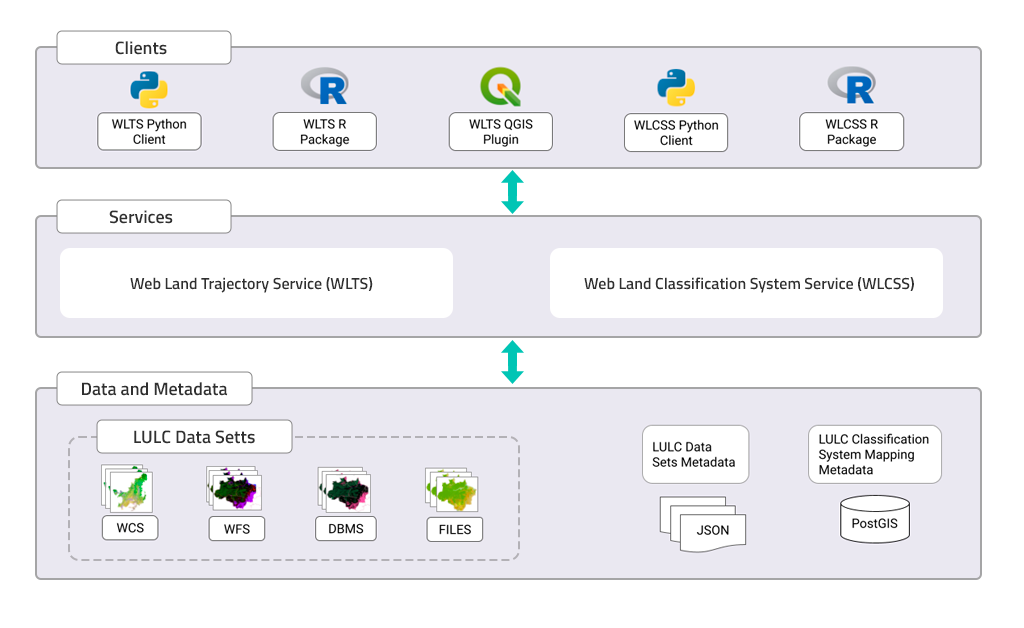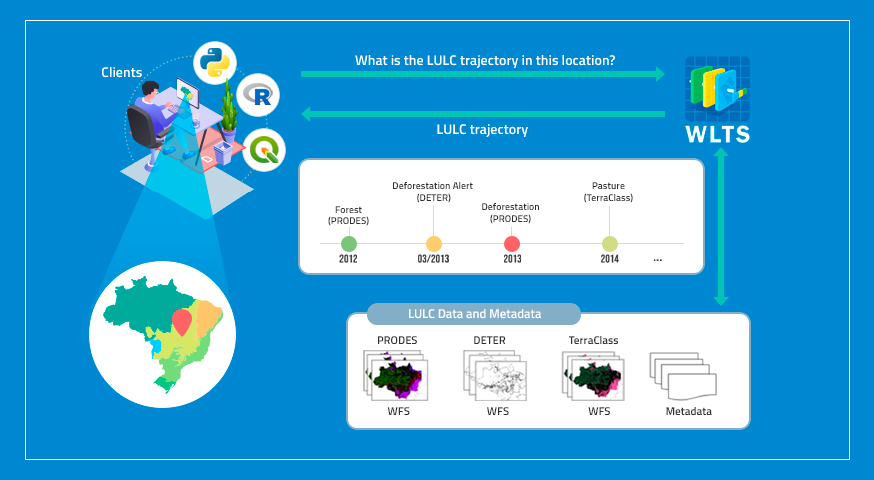

Information on LULC is essential to support governments in making decisions about the impact of human activities on the environment, in planning the use of natural resources, conserving biodiversity and monitoring climate change.
Nowadays, different initiatives systematically produce information on LULC dynamics, on global, national, and regional scales. At the national and regional level in Brazil, we can cite the data sets produced by PRODES, TerraClass, MapBiomas, and IBGE. In general, each initiative adopts its own LULC classification system, with different class names and meanings. In addition, these LULC data products have different spatial and temporal resolutions, have different data representations (raster or vector) and are served by different systems in different formats (files, DBMS or web services).
Although these initiatives provide rich collections of open LULC maps, there is still a gap in tools that facilitate the integration of these data sets. The integrated analysis of these collections requires considerable effort by researchers who have to download, organize and harmonize them in their local computers, facing different spatiotemporal resolutions and classification systems containing distinct class numbers, names and meanings.
To minimize these efforts, the BDC project team developed two web services, Web Land Trajectory Service (WLTS) and Web Land Classification System Service (WLCSS). These services allow users to access LULC collections from distinct sources, map their distinct classification systems, and retrieve LULC trajectories associated with spatial locations by integrating these collections.
Web Land Trajectory Service (WLTS) retrieving a LULC trajectory associated to a spatial location in the Amazonia biome, Brazil, integrating three LULC collections TerraClass, PRODES and DETER.

Architecture of the platform for LULC data integration and trajectory analysis.

The WLTS API is composed of three main operations:

For more details, access the paper published in the International Journal of Applied Earth Observation and Geoinformation:
by Fabiana Zioti, Karine R.Ferreira, Gilberto R.Queiroz, Alana K.Neves, Felipe M.Carlos, Felipe C.Souza, Lorena A.Santos and Rolf E.O.Simoes National Institute for Space Research (INPE), Avenida dos Astronautas, 1758, Jardim da Granja, Sao Jose dos Campos, SP 12227-010, Brazil DOI: https://doi.org/10.1016/j.jag.2021.102655 Publisher: ScienceDirect | Published: 18 December 2021. Abstract Information on land use and land cover (LULC) is essential …
Continue reading “A platform for land use and land cover data integration and trajectory analysis”

Associated publications
The Brazil Data Cube team has just registered four software systems developed in the project with the National Institute of Industrial Property (INPI). The number of computational systems registered with INPI is one of the productivity indicators of the National Institute for Space Research (INPE) and its postgraduate courses. The registered systems are: (1) Web …




